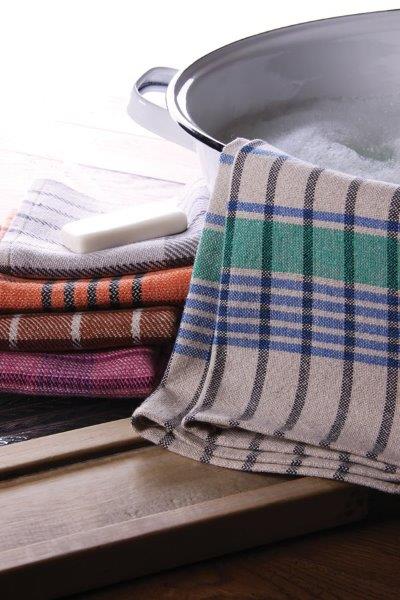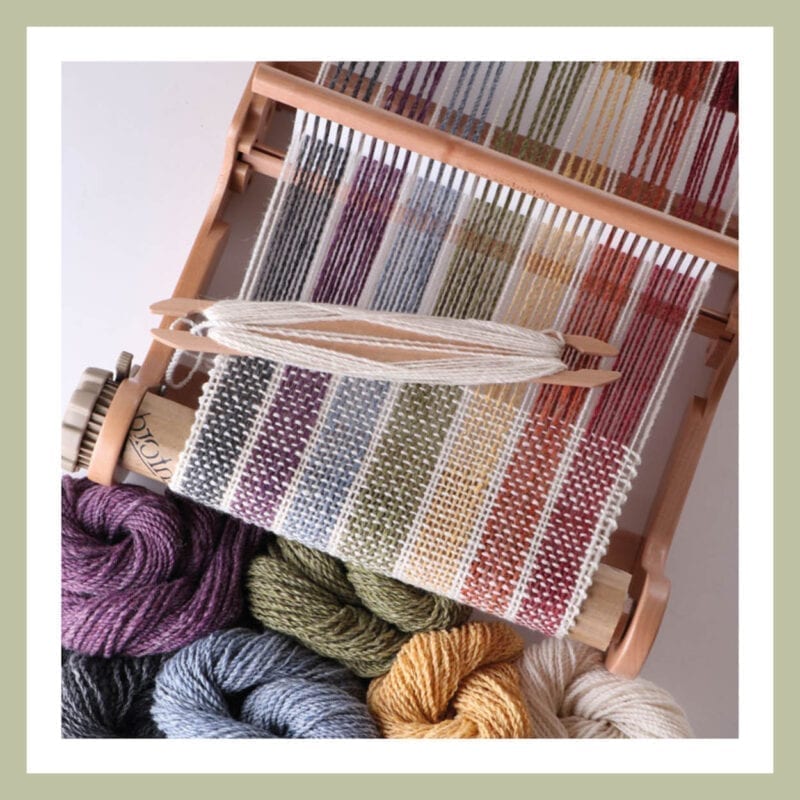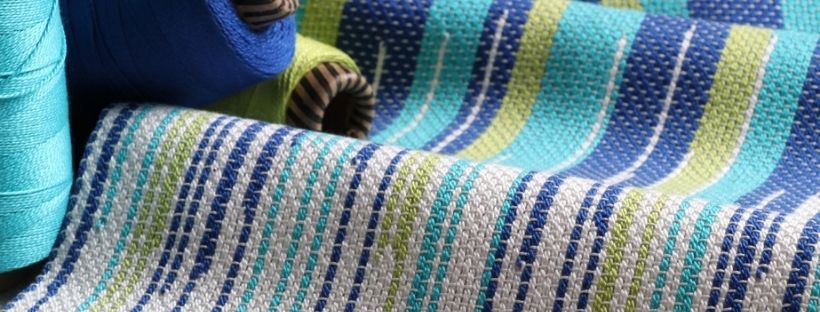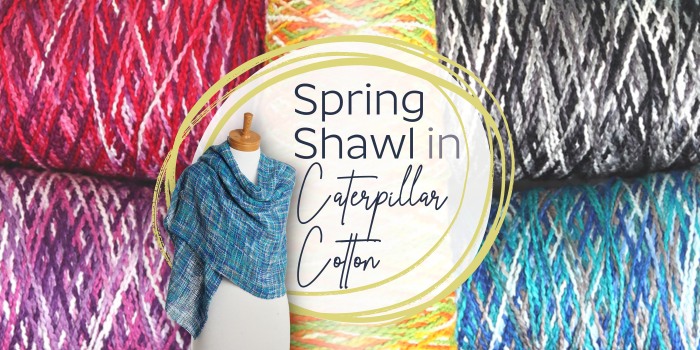Weaving
Learn the secrets to Rigid Heddle Loom weaving!
What is a rigid heddle loom?
New to weaving and not quite sure what a rigid heddle loom is? Keep reading to find out how it makes weaving fun.
A heddle is an integral part of a loom. Each thread in the warp passes through a heddle, which is used to separate the warp threads for the passage of the weft. The typical heddle is made of cord or wire and is suspended on a shaft of a loom. Each heddle has an eye in the centre where the warp is threaded through. As there is one heddle for each thread of the warp, there can be near a thousand heddles used for fine or wide warps. A handwoven tea-towel will generally have between 300 and 400 warp thread and thus use that many heddles.
How are heddles distributed?
In weaving, the warp threads are moved up or down by the shaft. This is achieved because each thread of the warp goes through a heddle on a shaft. When the shaft is raised the heddles are too, and thus the warp threads threaded through the heddles are raised. Heddles can be either equally or unequally distributed on the shafts, depending on the pattern to be woven. In a plain weave or twill, for example, the heddles are equally distributed.
How are different weave structures obtained?
The warp is threaded through heddles on different shafts to obtain different weave structures. For a plain weave on a loom with two shafts, for example, the first thread would go through the first heddle on the first shaft, and then the next thread through the first heddle on the second shaft. The third warp thread would be threaded through the second heddle on the first shaft, and so on. In this manner the heddles allow for the grouping of the warp threads into two groups, one group that is threaded through heddles on the first shaft, and the other on the second shaft.

What is the difference with a Rigid Heddle Loom?
While most heddles are as described, this style of heddle has derived from older styles, several of which are still in use. Rigid heddle looms, for example, instead of having one heddle for each thread, have a shaft with the ‘heddles’ fixed, and all threads go through every shaft
In rigid heddle looms there is typically a single shaft, with the heddles fixed in place in the shaft. The warp threads pass alternately through a heddle and through a space between the heddles, so that raising the shaft will raise half the threads (those passing through the heddles), and lowering the shaft will lower the same threads—the threads passing through the spaces between the heddles remain in place.
Rigid heddles are thus very different from the heddle in common use, though the single heddle derived from the rigid heddle. The advantage of non-rigid heddles is that the weaver has more freedom and can create a wider variety of fabrics. Rigid heddle looms resemble the standard floor loom in appearance.
What about the Ashford Rigid Heddle Loom?
The Ashford Rigid Heddle Loom is a standout. Not only is it affordable, portable, and versatile, its quick and easy to use and simple to assemble.
It comes with a built-in second heddle option and built-in indirect warping option (pegs not included). Its available in 4 weaving widths, there are extra reeds available in 6 sizes
Do you want to learn how to weave on the Rigid Heddle Loom? Get your FREE tutorial here
If you’re looking for a Free Tutorial? You will find them right here
The Good Yarn are also proud stockists of the Ashford Rigid Heddle Looms, which you can find right here.
Blog post proudly supplied by Ashford Wheels & Looms.
Learn more amazing crafting techniques








